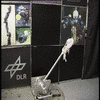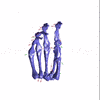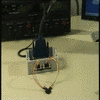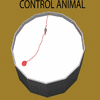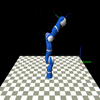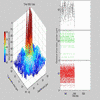
|
|
Videos reported here show examples of the results of SENSOPAC. UPMC Role of cerebellar learning in trajectory adaptive control: A spiking cerebellar model is given a sequence of motor commands (forming a global desired trajectory, red line) and adapts its dynamic to minimise local error in the execution of movement (drift). We compare the swimming abilities of a simulated mutant animal, which presents a cerebellar learning deficit, and a control animal. While control does adapt its sensory motor response and learns to correct its trajectory to follow an ideal one, a mutant agent is not able to learn local procedural corrections during the realization of the task (Passot, J.-B. and Luque, N. and Arleo, A. 2010).
|
